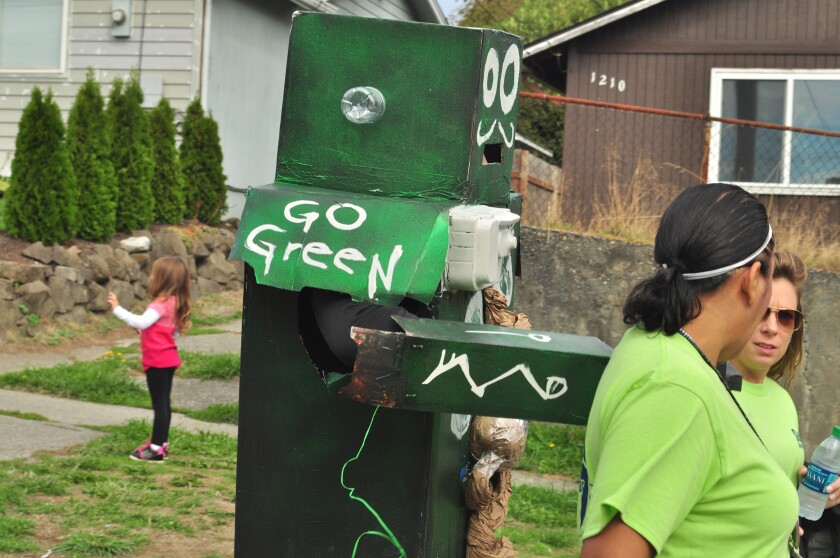The costumes improvised during the show The Glorious Story Emporium are a mix of old, new, and recycled items. Want to make your friends “Green” with envy … or at least make your costume “Green” and planet friendly? Costumes are fun to wear and to create, especially when made out of something you already have on hand. Halloween is just around the corner, so here are my top picks for recycling items into DIY costumes:

- Planet Pals: http://www.planetpals.com/recycle_parade.html This one has suggestions and images for an entire recycling costume party!
- Inhabitat: http://inhabitat.com/10-ingenious-halloween-costumes-made-from-recycled-junk Here are ten ideas of how to use recycling to make costumes like “WALL-E."

WALL-E costume made of recycled items. - Feed Mr Murph: http://www.feedmrmurph.com/kids-activities/make-your-own-costume-out-of-recyclables/ And this one has an eco activist and a Star Wars Storm Trooper, again from things you can find around your house! This one will be helpful for my other current production, a children’s musical parody, “S.T.R.A.W. Wars … in a cafeteria far, far away.” Performed at Provo Peaks Elementary School, with costumes made using the principles of reduce, reuse, and recycle! (see samples below) designed by the talented, Hannah Liberatore, another student at BYU. If you’re interested in helping out with this or other productions, leave me a comment in the comment section below!
S.T.R.A.W. Wars costume designs by Hannah Liberatore



4. What are some of your favorite costumes that use recycling?
What are some of your top picks? Put your links and ideas in the “Comments Section” at the end of this blog, thanks for sharing!


